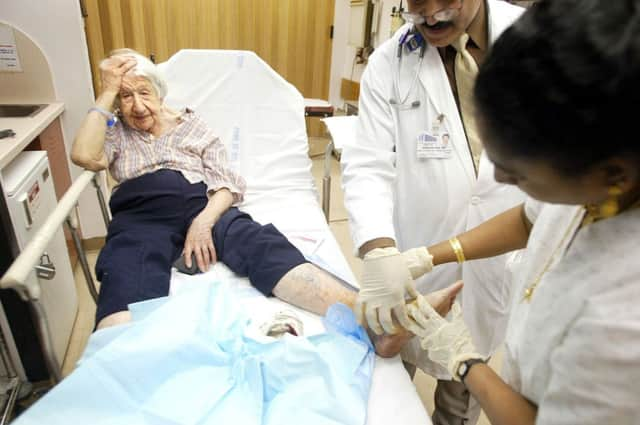Laser treatment the best option for varicose veins


A study at the University of Aberdeen compared three different methods of treating varicose veins – surgery to strip them out, using laser heat to close the vein, and foam injection which causes a chemical reaction, making vein walls stick together.
Between 30 and 40 per cent of the adult population in the UK suffer from varicose veins which are caused by valves in the vein becoming leaky, resulting in increased pressure. The veins then become bulky and swollen, causing discomfort and aching, and sufferers may also experience swelling of the ankles, skin changes and leg ulcers.
Advertisement
Hide AdAdvertisement
Hide AdAlmost 800 people with the condition were involved in the research, examining how well the three treatments worked from both the patient and clinician’s perspective.
Participants were randomly selected for the different treatments at 11 vascular surgery centres across the UK, including Aberdeen Royal Infirmary.
The study, published in the New England Journal of Medicine, concluded that there were moderate differences in quality of life in favour of patients undergoing laser treatment or surgery, in comparison to those who had foam treatment.
The research also showed that while all three treatments reduced the symptoms associated with varicose veins, fewer complications occurred during laser treatment than foam injection or surgery.
The researchers found that foam treatment was less likely to close the leaky vein and therefore there may be an increased chance of needing more treatment in the future.
Chief investigator, Professor Julie Brittenden, chair of vascular surgery at the university, said that 90 per cent of the patients involved in the study were treated in NHS hospital clinic rooms.
“With laser treatment and foam, the treatment is carried out under local anaesthetic. It is minimally invasive and almost ‘walk in, walk out’. Surgery to strip out the veins means a general anaesthetic.
“The important measure we use is quality of life after the treatment. All three treatments improved quality of life but with some differences.
Advertisement
Hide AdAdvertisement
Hide Ad“For example, some ongoing problems from foam treatment included lumpiness and skin-staining a green colour as side- effects.
“Laser treatment also had some staining initially but this then settled down.
“What this study has shown is that, overall, for patients who are suitable for all three treatment options, laser is the preferred treatment.
“We have reached this conclusion based on the success and cost of the treatment after six months; however we will follow the participants’ progress for a further five years.”